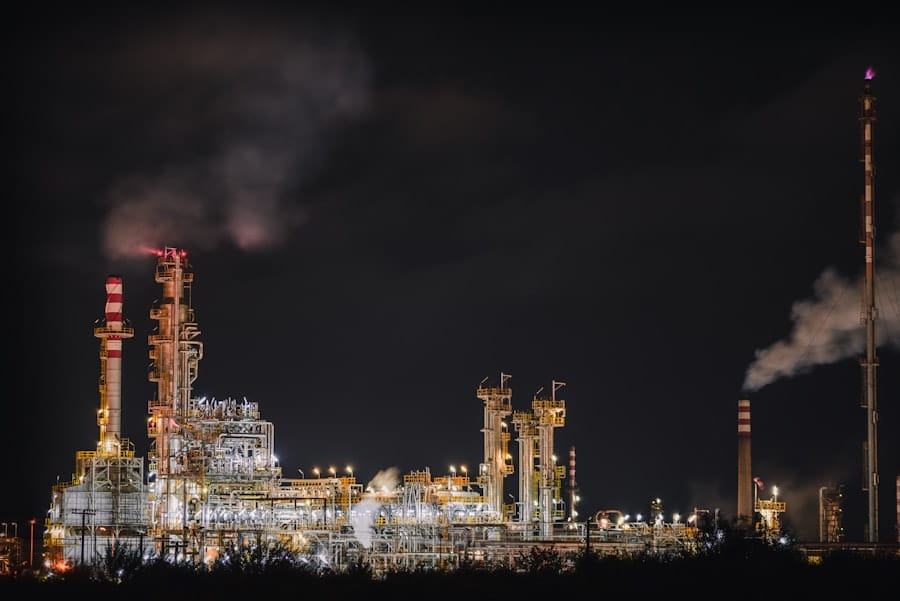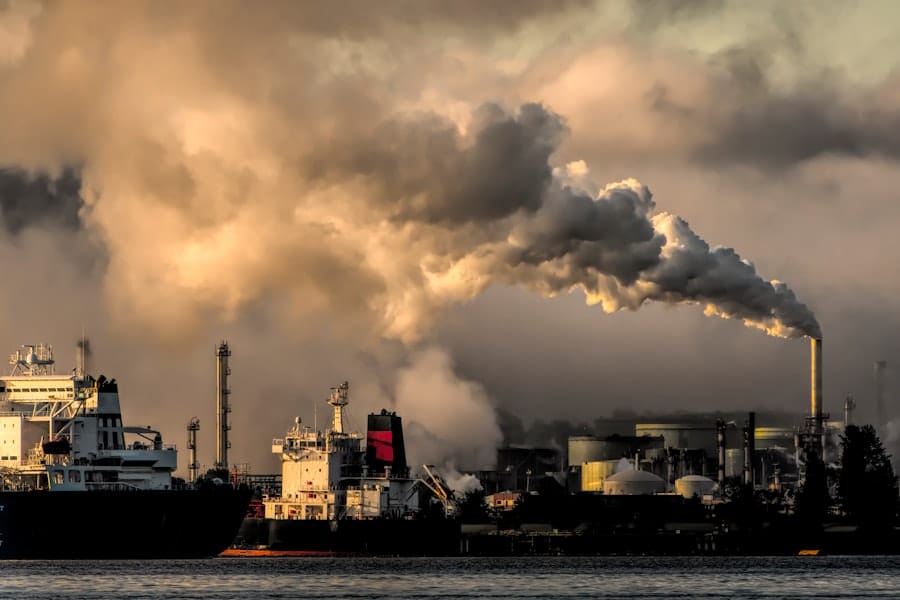Quantitative Risk Assessment (QRA) is a methodical approach for evaluating and quantifying potential risks associated with hazardous processes and activities. This technique employs mathematical models and statistical methods to analyze the probability and consequences of various hazards, including fires, explosions, and toxic releases. QRA is a crucial tool for industries handling hazardous materials, such as oil refineries, chemical plants, and manufacturing facilities.
It aids in identifying and prioritizing potential risks and developing effective risk management strategies. The QRA process typically involves three main steps: identifying potential hazards, estimating the likelihood and consequences of these hazards, and assessing the overall risk. This systematic approach enables organizations to make informed decisions regarding risk reduction measures and emergency response planning.
By quantifying the risks associated with specific activities and processes, QRA provides valuable insights that can help prevent accidents, protect workers and the public, and minimize the environmental impact of industrial operations.
Key Takeaways
- QRA is a systematic approach to assess and quantify the potential risks associated with hazardous activities and facilities.
- The oil refinery in Barauni is a major industrial complex with various processes and operations that pose potential risks to the surrounding environment and community.
- QRA methodology involves identifying hazards, assessing their likelihood and consequences, and determining risk levels to prioritize mitigation measures.
- The analysis of major hazards and risks at the Barauni refinery revealed potential threats to the safety of workers, nearby residents, and the environment.
- The findings suggest the need for implementing risk mitigation measures such as improving safety protocols, enhancing emergency response capabilities, and conducting regular safety audits.
Overview of the Oil Refinery in Barauni
Refinery Overview
The oil refinery in Barauni is one of the largest and most important refineries in India, owned and operated by Indian Oil Corporation Limited (IOCL). With a refining capacity of 6 million metric tonnes per annum, it plays a crucial role in meeting the energy needs of the region by processing crude oil into various petroleum products, including gasoline, diesel, kerosene, and LPG.
Complex Industrial Operations
The refinery in Barauni is a complex industrial facility that involves numerous hazardous processes, such as crude oil distillation, catalytic cracking, and hydroprocessing. These processes pose inherent risks, including the potential for fires, explosions, and toxic releases.
Risk Assessment and Mitigation
Given the scale and complexity of the refinery operations, it is essential to conduct a comprehensive Quantitative Risk Assessment (QRA) to identify and mitigate potential hazards and risks. This assessment is critical to ensuring the safe and efficient operation of the refinery, and to protecting the surrounding environment and communities.
QRA Methodology and Approach

The Quantitative Risk Assessment (QRA) for the oil refinery in Barauni will involve a systematic and rigorous approach to evaluating the potential risks associated with its operations. The methodology will include several key steps, including hazard identification, consequence analysis, risk estimation, and risk evaluation. These steps will be carried out using advanced modeling techniques, historical data analysis, and expert judgment to ensure a comprehensive and accurate assessment of the refinery’s risks.
Hazard identification will involve identifying all potential hazards associated with the refinery’s operations, including equipment failures, human errors, and external events such as natural disasters or sabotage. Consequence analysis will then assess the potential impacts of these hazards, including the potential for fires, explosions, toxic releases, and environmental damage. Risk estimation will involve quantifying the likelihood and consequences of each hazard to determine the overall risk level.
Finally, risk evaluation will prioritize the identified risks based on their severity and likelihood, allowing for the development of targeted risk management strategies.
Analysis of Major Hazards and Risks
The analysis of major hazards and risks at the oil refinery in Barauni will focus on several key areas of concern, including process safety, fire safety, environmental impact, and occupational health and safety. The refinery’s complex operations involve numerous potential hazards, such as high-pressure equipment, flammable materials, and toxic chemicals, which can lead to catastrophic events if not properly managed. One major hazard at the refinery is the potential for fires and explosions due to the presence of flammable materials and high-temperature processes.
These events can result in significant damage to equipment, infrastructure, and personnel, as well as pose a threat to nearby communities. Another major risk is the potential for toxic releases, which can have severe health impacts on workers and nearby residents, as well as cause environmental damage. In addition to these immediate hazards, the refinery also poses long-term risks related to environmental pollution and occupational health and safety.
The release of pollutants into the air, water, and soil can have far-reaching environmental consequences, while workers are exposed to various occupational hazards such as chemical exposure, noise, and ergonomic risks. These risks must be carefully analyzed and addressed to ensure the safe and sustainable operation of the refinery.
Findings and Recommendations
The Quantitative Risk Assessment (QRA) for the oil refinery in Barauni has identified several key findings regarding the major hazards and risks associated with its operations. These findings highlight the need for targeted risk mitigation measures to enhance process safety, fire safety, environmental protection, and occupational health and safety at the refinery. Based on the QRA findings, several recommendations can be made to address the identified risks.
These recommendations may include implementing additional safety measures such as improved equipment maintenance, enhanced process monitoring systems, and upgraded emergency response capabilities. In addition, measures to reduce the likelihood of fires and explosions, such as improved hazard identification and control systems, may be recommended. Environmental protection measures may also be recommended to minimize the impact of potential toxic releases on surrounding ecosystems.
This could involve implementing advanced pollution control technologies, enhancing leak detection systems, and developing comprehensive environmental management plans. Furthermore, recommendations for occupational health and safety may include implementing ergonomic improvements, providing personal protective equipment (PPE), and enhancing worker training programs.
Implementation of Risk Mitigation Measures

Coordinated Effort and Resource Allocation
The implementation of risk mitigation measures at the oil refinery in Barauni will require a coordinated effort involving various stakeholders, including management, employees, regulators, and local communities. The recommendations from the Quantitative Risk Assessment (QRA) will serve as a roadmap for prioritizing and implementing targeted risk reduction strategies to enhance safety and sustainability at the refinery. To effectively implement risk mitigation measures, it will be essential to allocate resources for necessary upgrades and improvements.
Implementation and Collaboration
This may involve investing in new equipment, technology upgrades, training programs, and infrastructure enhancements to address the identified risks. In addition, clear communication and collaboration among all stakeholders will be crucial to ensure that risk mitigation measures are effectively implemented.
Ongoing Monitoring and Evaluation
Furthermore, ongoing monitoring and evaluation will be essential to assess the effectiveness of implemented risk mitigation measures and make any necessary adjustments. This may involve regular safety audits, performance evaluations, incident investigations, and continuous improvement initiatives to ensure that the refinery maintains a high level of safety performance over time.
Conclusion and Future Considerations
In conclusion, the Quantitative Risk Assessment (QRA) for the oil refinery in Barauni has provided valuable insights into the major hazards and risks associated with its operations. The findings from the QRA have highlighted the need for targeted risk mitigation measures to enhance process safety, fire safety, environmental protection, and occupational health and safety at the refinery. Looking ahead, it will be essential for the refinery to prioritize the implementation of recommended risk mitigation measures to ensure a safe and sustainable operation.
This may involve ongoing investment in safety improvements, regular monitoring of safety performance, and continuous improvement initiatives to address emerging risks. Additionally, it will be important for the refinery to maintain open communication with stakeholders and regulators to ensure that all necessary measures are taken to protect workers, communities, and the environment from potential hazards. In conclusion, conducting a comprehensive QRA is an essential step for any industrial facility dealing with hazardous materials to identify potential risks accurately.
The findings from this assessment can provide valuable insights into areas that need improvement in terms of safety measures. By implementing these recommendations effectively with ongoing monitoring and evaluation processes in place will ensure a safe working environment for all involved stakeholders.
In a related article by Elion, they discuss the use of thermography for water leak detection at an oil refinery in Barauni. The article highlights the importance of using advanced technology to identify and address potential issues in industrial settings. This case study complements Elion’s work in conducting energy audits in various locations, such as Male and Himachal Pradesh. To learn more about their energy audit services, you can visit Elion’s energy audit in Male and Elion’s energy audit in Himachal Pradesh.

